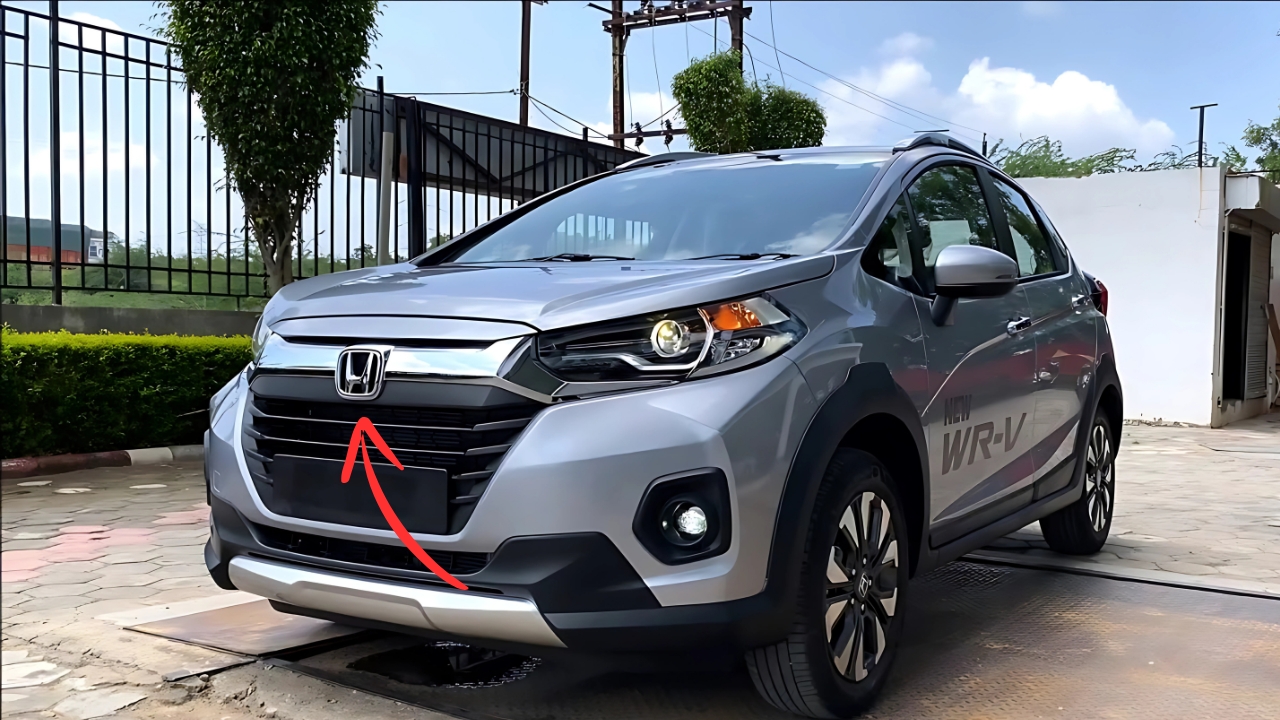Honda WR-V: WR-V was Honda’s answer to India’s new-found love for compact crossovers and it perfectly complemented the Japanese carmaker’s other product, the Jazz.Of course it did.
And instead of creating an all-new platform, Honda cannily repurposed its Jazz hatchback into a slightly more rugged package, in so doing creating a car that straddled traditional segment boundaries while still staying true to the brand’s core values of engineering brilliance and intelligent packaging.
Design Evolution: Re-Interpreting a Hatchback
WR-V (Winsome Runabout Vehicle) soon set itself apart from its sibling, the Jazz with a host of changes in its styling.
The front now looked more aggressive with the raised line which ran from the boot to the bumper, a larger, more chrome-rich grille and teardrop-shaped headlights with LED daytime running lights on higher variants.
The bumpers were accented with protective cladding and communicated off-road readiness, and the roof rails continued to reflect the adventure aspect of the design.
Side on, the higher ride height (28 more millimetres than Jazz at 188mm) gave more purposeful proportions, too, with bigger 16-inch wheels adding swagger and robust body cladding around wheel arches and over the door sills.
The rear to the Jazz kept the family look but it received new L-shaped taillamps and a stronger bumper with an integrated silver skid plate elements.
These changes accomplished visual distinction without reworking the canvas entirely, and allowed Honda to move into the booming crossover market with the economy of scale that comes with similar manufacturing.
Inside the Cabin: Clamping Down on Practicality
Get inside the WR-V and the Jazz connection was more evident, but some wise tweaks kept its crossover branding.
The dashboard design was essentially unchanged and retained Honda’s typically sensible control placement and great ergonomics.
You sit up like in a crossover, but because of increased visibility compared to the Jazz, it’s not as crossover-ish a feeling as that brought crossover-ishness.
The WR‑V’s best point inside however, is how well space is utilised – a Honda signature but one amplified by the crossover’s extra size.
The back seat was generous in its leg room, unusual in this segment, and the flat floor permitted when needed more comfortable three-passenger seating.
The boot was typical of the class with a competitive 363 litres – useful dimensions also meant it was at the more usable end of the pack.
Material quality matched the price position, durable plastics covering areas you’re likely to touch but with textured surfaces and contrasting elements appearing to lift the perceived ambiance from harder materials.
Comparatively hushed acoustics relative to the Jazz showed that Honda had worked out that people in the market for a crossover wanted a bit of added refinement with their butch styling.
Performance Dynamics
The WR-V was available in two battle tested Honda powertrains 1.2L i-VTEC petrol which gives an output of 90 PS and 1.5L i-DTEC diesel that delivers 100 PS.
The petrol and diesel engines were available only with manual transmissions; the 5-speed and 6-speed manual transmissions respectively; there was no automatic option in Indian market during the entire lifecycle of the car.
The petrol version was full of Honda traits, such as a willing (if a bit laggy and breathless) revving nature and sleekness to the engine, but you had to work at it to get it to work, especially if the car was fully laden.
The diesel was better suited to driving in India with its strong mid-range torque, and excellent fuel efficiency – usually more than 25 km/l on the highways.
More ground clearance and retuned suspension handled the tricky tightrope act between ride comfort and dynamism though the extra height did bring more of the body roll that haunted the Jazz under hard cornering.
The electric power steering lacked communication, but was otherwise classic Honda, precise without any sort of enthusiasm.
Pros and Cons
Pros:
Exceptional internal space because of small external dimensions
Best fuel economy, of any non-hybrid or diesel and better highway mileage than the V6’s 24-25 mpg.
High ground clearance ideal for Indian road requirements
Solid construction for mechanical stability and reliance
Well considered Ergonomic and Easy Control Layout
One-touch electric sunroof quite unusual for the segment
Honda’s reputation for quality engineering
Cons:
Narrow appeal due to no automatic transmissions
Gasoline motor had to be revved for decent power.
Entertainment system was a little clunky looking next to competitors
Petrol versions are less refined at higher speeds in terms of NVH
Limited added features during production life
Défauts Absent des équipements sécuritaires modernes, tels le contrôle de stabilité
Priced at a premium relative to some competitors
Honda WR-V: Market Positioning
Placed in the bracket of ₹8.5-11 lakhs (ex-showroom), WR-V was in a sweet spot somewhere between the high end hatchback and compact SUV segment.
This positioning was based on Honda’s realisation that a fair number of Indian customers wanted crossover looks and higher ground clearance, but weren’t necessarily looking for serious off-road ability or the size penalties of bigger SUVs.
The WR-V actually showed how smart platform engineering and intelligent design changes can give a car a completely different character without any major re-development – a trick that saw Honda play in the burgeoning crossover market and at the same time, keeping things manageable in terms of manufacturing.
But times have since changed, the WR-V’s mix of hatchback practicality and crossover features created a recipe that has set a precedent influencing product development among carmakers in India’s tumultuous car market.
